Fodamon engineers provide some suggestions on how to maximize the production capacity of your cone crusher.
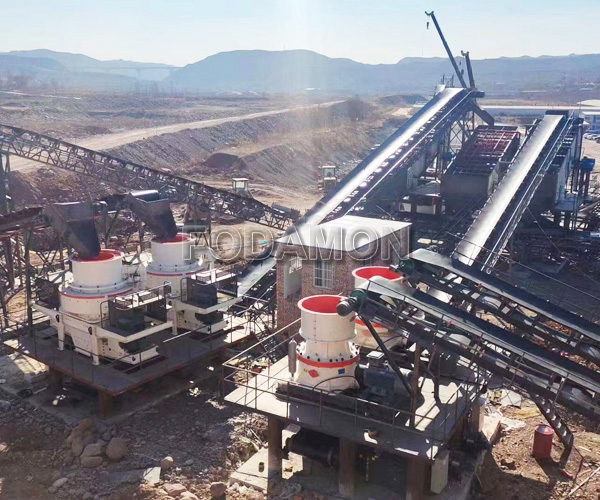
Ⅰ Improper selection of equipment:
Whether the selection of crushing equipment is reasonable is the primary factor determining the success of the sand and gravel processing system, and the equipment selection depends on the physical properties of the raw materials (such as compressive strength, crushing index, abrasive index, etc.).
When selecting crushing equipment, the first consideration should be the fragility of rocks. Rotary crushers, jaw crusher, and cone crusher are suitable for medium to difficult to break rocks, while impact crusher and hammer crusher are suitable for medium to fragile rocks. The properties of rocks greatly affect the selection of crushing equipment, as well as the quality and cost of sand and gravel aggregates. Therefore, the selection of crushing equipment must carefully analyze and understand the rock properties, and make reasonable choices through experiments and technical and economic comparisons.However, due to many production line investors choosing unsuitable types based on their own situation. For example, for raw materials such as granite, diabase, and basalt with high hardness and wear index, the production line has chosen hammer crushers or impact crushers. Although the product produced has excellent particle size, the wear and tear of equipment such as hammer heads and impact plates are severe, and replacement is extremely frequent, resulting in a significant increase in production costs and inability to compete with surrounding markets.
This problem is generally difficult to solve by adjusting the process, and production enterprises have to replace the extrusion crusher equipment to ensure long-term stable and economical operation of the production line.
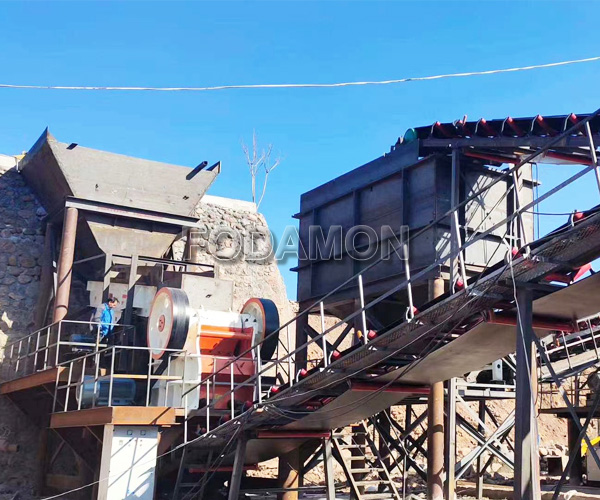
II Improper design of material storage or silo:
The silo or material warehouse of the sand and gravel aggregate production line mainly includes coarse crushing feeding silo, medium and fine crushing and sand making buffer silo, product storage silo, and stone powder (0-0.075mm) storage silo.
- Coarse crushing feeding silo
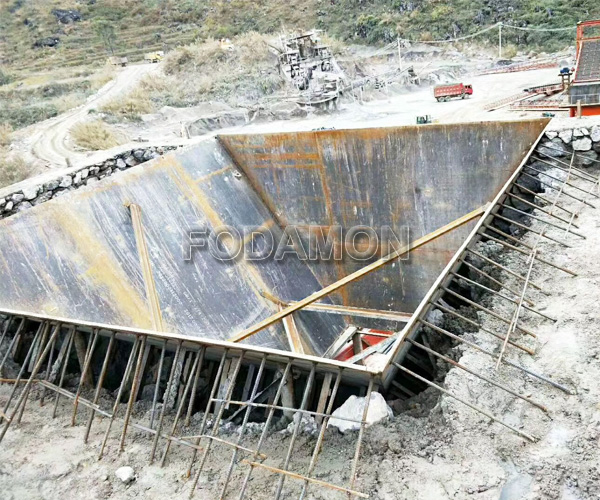
The common problem with coarse broken feeding silos is that the side discharge port of the silo is designed with a rectangular “door” structure, and there is a dead angle between the silo and the discharge port. The material discharge is not smooth enough, and large pieces of material are easy to accumulate here, affecting normal feeding. A simple measure to address this issue is to place an excavator next to the feeding port and clean up any accumulated material at any time; In the off-season of the market, the side discharge port of the feeding silo will be transformed into a trapezoidal “inverted eight” shaped structure to eliminate dead corners of accumulated material.
- Medium and fine crushing and sand making buffer silo
The common problem with medium to fine crushing and sand making buffer silos is that the bottom of the silo is designed as a flat bottom steel silo structure. Due to the large overall material pressure at the bottom of the silo, serious deformation and sinking of the steel silo bottom may occur during the operation of the production line, which can lead to safety hazards. The improvement measures that can be taken for this issue are to reinforce the bottom structure of the warehouse; When designing, the design unit should try to avoid using a flat bottom steel warehouse structure. When it is inevitable to use a flat bottom warehouse structure, it is best to choose a concrete structure at the bottom of the warehouse.
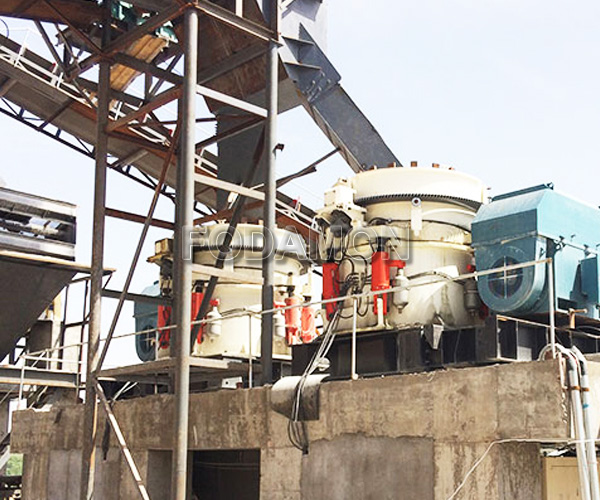
- Product repository
The product storage warehouse generally adopts the form of concrete storage, which has a large storage capacity and is safe and stable. However, some enterprises have also chosen steel plate warehouses to store sand and gravel aggregates. It is hoped that these enterprises will regularly inspect the wear condition of the steel plate warehouses and carry out wear-resistant treatment.
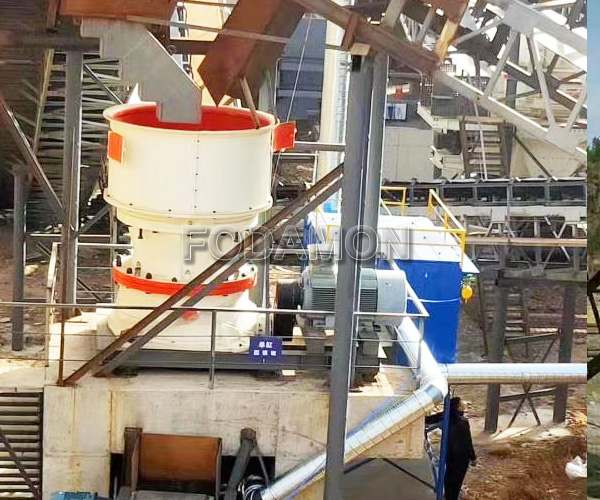
- Stone powder storage warehouse
The common problem with stone powder storage warehouses is that the wet and sticky stone powder produced during rainy weather production makes it difficult to discharge the stone powder from the warehouse. The improvement measures that can be taken to address this issue are to install several air cannons below the warehouse body and use compressed air to loosen the stone powder inside the warehouse; The design unit should try to control the size of the stone powder silo as much as possible during design, and design flow aids, inflatable boxes, or air guns in the conical part of the silo.
III Material transfer drop problem:
The large drop area where materials are transported usually has at least two rough discharge ports and a vibrating screen inlet.
- Coarse break discharge port
The coarse crushing equipment has a certain concrete foundation thickness, and its discharge port has a large drop between the downstream conveyor belt machines. Moreover, after coarse crushing, the material block size is mostly less than 300mm. These stones are directly hit on the conveyor belt machine, causing phenomena such as dropping the buffer roller and tearing the conveyor belt open by the roller frame. The improvement measures that can be taken for this issue are to replace the buffer roller of the downstream belt conveyor with a buffer material bed and change the structure of the discharge chute to reduce the impact on downstream equipment. In addition, if the drop is particularly large and the layout space allows, it can also be considered to reduce the impact on downstream equipment by adding buffering feeding equipment (such as vibration feeders).
- Vibrating screen inlet
In the design of the production line, in order to ensure sufficient maintenance space above the vibrating screen or a “one-to-two” material separation between the conveying equipment and the vibrating screen, there may be a large drop of material when entering the vibrating screen, and the material may have a large impact on the screen plate during operation, resulting in rapid wear and tear of the screen plate. The improvement measures that can be taken for this problem are to add waste belt conveyor tape locally at the impact position of the vibrating screen plate, and adjust the form of the chute reasonably to reduce the impact and wear on the screen plate.
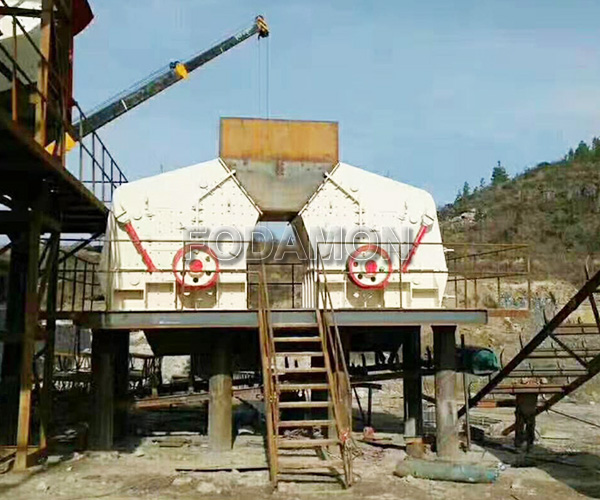
IV Large dust and insufficient environmental protection:
After formal design of the production line, the environmental protection can basically meet the requirements of the national standard, but some production lines have large dust near the secondary impact crusher and the bulk loading garage of finished products. The improvement measures that can be taken for this issue are to first calculate the selected dust collector specifications based on the number and location of dust collection points. For dust near the impact crusher, if the designed and selected dust collector has sufficient air volume, setting dust collection points before and after the crusher discharge point can effectively reduce dust raised here. For the fugitive dust near the bulk of the finished product warehouse, if the air volume of the dust collector selected in the design is sufficient, and the dust collected by the bulk machine is collected by the dust collector on the top of the warehouse, the dust collection efficiency of the dust collector on the top of the warehouse can be improved by adding a centrifugal fan between the bulk machine and the connecting air duct of the dust collector on the top of the warehouse, and the fugitive dust can be effectively reduced by adding water spray near the discharge port of the bulk machine. If it is calculated that the air volume of the selected dust collector is insufficient, it needs to be solved by adding a dust collection system (when the air volume needs to be supplemented) or increasing the original dust collector fan motor and adjusting the fan valve.
In addition, when products are stored in a shed, there is always unorganized dust discharge during the material stacking process. At present, the effective measure for this problem is to add water spray dedusting facilities after reasonable calculation according to the stacking capacity and stacking height.
Ⅴ Collection and transportation issues of stone powder (<0.075mm):
The dust collection stone powder from the production line is directly collected on the downstream conveyor belt, which poses problems such as repeated transportation causing secondary dust and high stone powder content in the product. The stone powder in the production line is transported by a belt conveyor, and there may be dust overflow caused by the inadequate sealing of the belt conveyor guide groove and rain cover, or the wet stone powder caused by rain leakage on rainy days, ultimately leading to the phenomenon of paste storage. In the production line, the stone powder is transported using an air conveying chute, which has the problem of sealing the breathable layer of the chute when the stone powder is damp in rainy days, making it impossible to transport the material. The improvement measures that can be taken to address the above issues are to separately transport the dust collected by the dust collectors of all or at least the later stages of the production line to the stone powder warehouse for storage through zipper machines and elevator equipment.
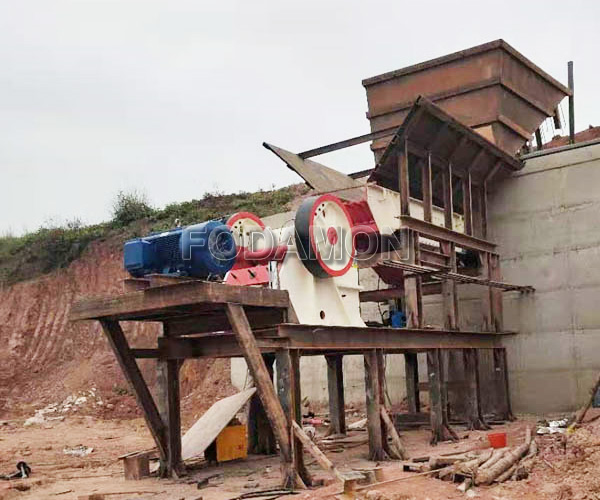
VI Other issues:
The vibrating screen feeding machine of the production line has a high load when starting, which can easily cause severe wear or damage to the exciter gear. The improvement measures that can be taken to address this issue are to adjust the installation angle of the equipment appropriately and add a frequency converter to slowly start.
Due to inaccurate basic information collected during the design of the production line, the selection of individual conveyor belts is too small, which affects the production capacity of the production line. The improvement measures to address this issue are to increase the belt speed of the belt conveyor by replacing the drive system, thereby increasing the conveying capacity of the belt conveyor.
There is ash and material leakage at the inlet and outlet connections of vibration equipment, and the canvas soft connection used is not durable and frequently replaced. The improvement measures for this problem are to use waste belt conveyor tape to make soft connections on-site, which has a long service life and good sealing effect.
The quality of sand and gravel aggregates directly affects the quality of concrete and determines the quality of the project. The quality of sand and gravel aggregates depends on factors such as the quality of the sand and gravel raw materials themselves, the selection of crushing equipment, processing technology, and operational management level. Therefore, strict control must be exercised throughout the design and operation process to improve the quality of the finished aggregates as much as possible.
